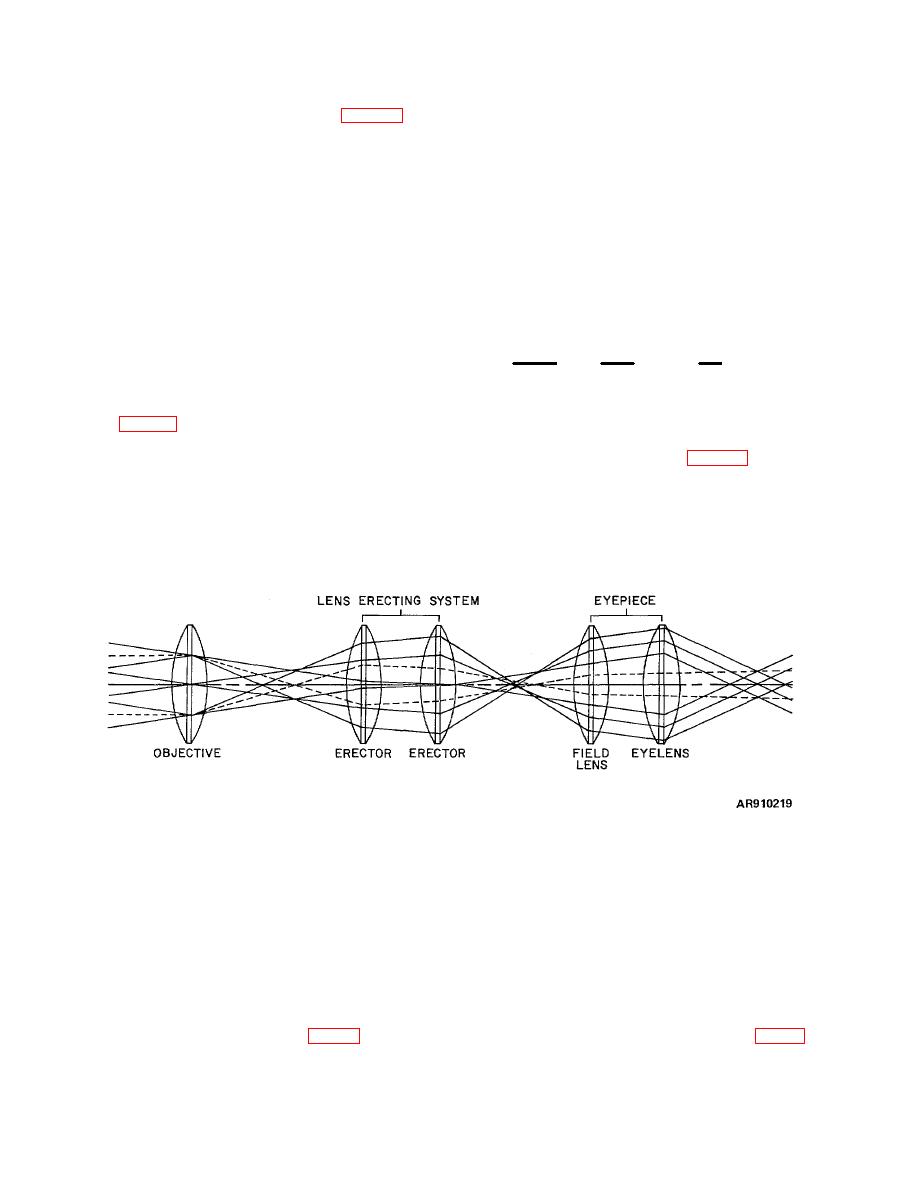 |
|||
|
|
|||
|
Page Title:
Law of relative size of object and image |
|
||
| ||||||||||
|
|
 TM 9-258
its path is deviated away from the normal (fig 2-24).The
lens, convexo-concave lens, corrected lens, cylindrical
amount of deviation is determined by means of the
lens, dialyte, diverging lens, double-concave lens,
equation for the index of refraction for the two media
double-convex lens, doublet erector eyelens, field lens,
involved. See index of refraction.
meniscus-converging lens, meniscus diverging lens,
Law of relative size of object and image - The size of
minus lens, objective, orthoscopic lens, plano-concave
lens, planoconvex lens, plus lens, and triplet.
the image is to the size of the object as the image
Lens cell - A number of lenses mounted as a unit in
distance from the lens or mirror is to the object distance.
Law of reversibility - If the direction of light is
a tubular mounting frame.
Lens diopter - See diopter.
reversed, it will travel in the opposite direction over the
Lens equation, elementary - The equation giving the
same path despite the number of times it is reflected or
refracted.
relation between the distances from the optical center of
Lens (plural, lenses) - A transparent object, usually a
the lens of the object (Do), the image (Di), and the
piece of optical glass, having two polished surfaces of'
principal focus (F). These values are related as
which at least one is curved, usually with a spherical
1
plus
1
equals
1
curvature. It is shaped so that rays of light, on passing
Do
Di
F
through it, are made to converge or diverge. The fact
that lenses either converge or diverge rays provides one
Lens erecting system - See erecting system.
means of classification, the type of curvature provides
Lens retaining ring - See retaining ring.
another (fig 4-1), the corrections made in the lens
provides still another. The term lens may be employed
Lens system - Two or more lenses arranged to work in
to mean a compound lens which can consist of two or
conjunction with one another (fig B-19). When in proper
more elements.
See achromatic lens, anastigmat,
alinement, the principal axes will be coincident and the
aplanatic lens, apochromatic lens, astigmatizer,
system can be referred to as a "centered lens system."
collective lens, compound lens, concavo-convex lens,
converging
Figure B-19. Optical system of erecting telescope .
Lenses of the eye - The refractive elements of the
Limiting angle of resolution - The angle subtended by
eye. See cornea and crystalline lens.
two points which are just far enough apart to permit them
Light-adapter - A term applied to the adjustment of
to be distinguished as separate points. It is commonly
used as a measure of resolving power.
the visual cells of the retina of the-eye for the clearest
Limits of accommodation The distances of the
and most distinct 'sight under good lighting conditions. It
nearest and farthest points which can be focused clearly
applies to the process whereby the cones of the retina
by the eyes of an individual. Usually varies from 4 to 5
take over the major portion of the act of seeing.
Light ray - The term applied to the radii of waves of
inches to infinity. See accommodation.
Line of elevation In artillery, the line of the axis of the
light to indicate the direction of travel of the light. Light
bore of a gun when it is in firing position (fig B-3).
rays are indicated by arrows and lines (fig 2-5).
B-19
|
|
Privacy Statement - Press Release - Copyright Information. - Contact Us |